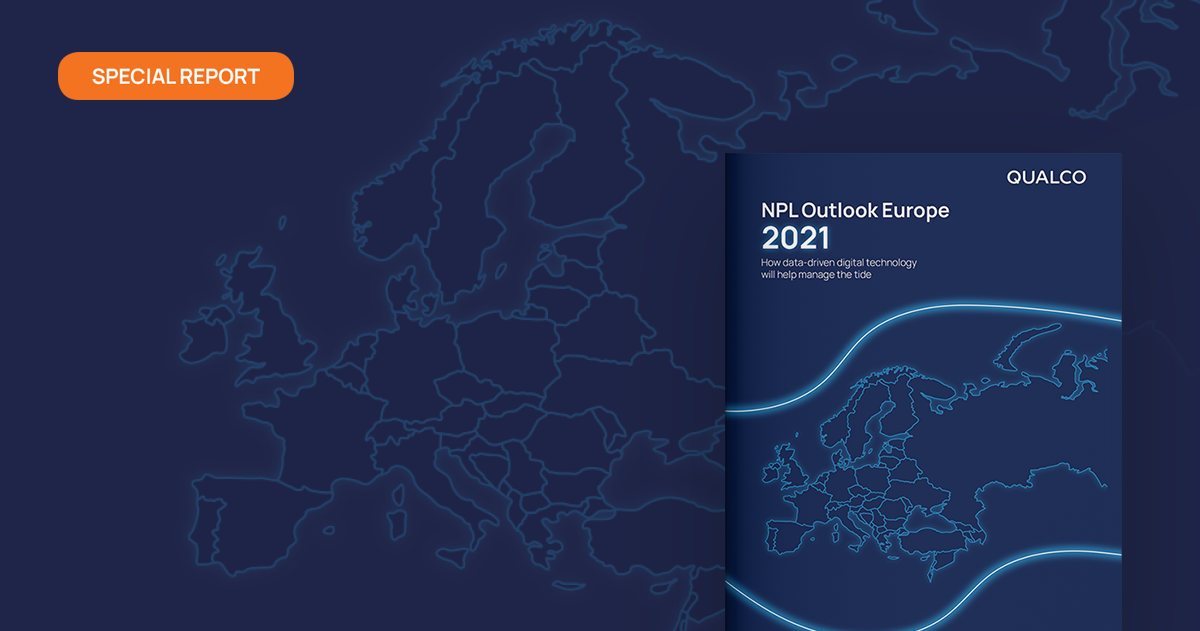[SPECIAL REPORT] NPL OUTLOOK 2021
QUALCO |
What does the future hold for the European NPL market? How do provisioning levels compare around Europe? What is the impact of deferral and forbearance programs on future inflows of NPLs? What technology challenges will creditors and collections functions face? How can technology radically improve the ability to quickly and efficiently clear now those legacy impaired assets?
QUALCO, in association with DDC Financial Group launch a special report that addresses the latest information on the NPL market in Europe. The report is driven by fundamental analysis on macro and micro-economics and the main trends that are affecting the outlook in this sector for the coming years.
2020 challenged all of us. The most severe economic contraction in decades triggered vast monetary accommodation and fiscal support packages that altered the investment landscape. The COVID-19 shock is unique in both its magnitude and sector impact. Unlike prior recessions, the services sector has been most hard hit by the downturn. The recovery will remain incomplete until the services sector normalizes. And the services sector will not normalize until we adjust to living with COVID-19.
Global Debt
The huge rise in corporate leverage combined with an uncertain economic outlook increases the chances that debts will not be repaid in full or on time. Defaults have already picked up sharply. The global debt load comprised of both private and public debt, rose by $24 trillion last year, making up over a quarter of the $88 trillion rise over the past decade, now stands above $281 trillion. Almost no one expects the economy to have fully recovered by the end of 2021, with some estimates indicating that global debt could exceed $360 trillion by 2030.
Private Debt
Private Debt continues to attract strong demand from global investors who have essentially gone looking for what they cannot find in public markets to meet their evolving needs. The European demand for private capital has extended to lending and, in this environment, European private credit managers and their investors, have demonstrated their commitment and expect to provide businesses with over $110 billion of new capital in 2021.
European Non-Performing Loans & Regulations
In an adverse scenario, the ECB has estimated that the amount of non-performing loans (NPLs) in the Euro area might reach €1.4 trillion by the end of 2022, while the Eurozone NPL ratio is expected to increase from 3.1% in Q4 2019 to 4.7%-5.4% by the end of 2021. This would put between €255-380 billion of additional NPLs on Eurozone banks’ balance sheets by the end of 2021.
On December 16th 2020, the European Commission on Coronavirus response issued the guideline “Tackling non-performing loans (NPLs) to enable banks to support EU households and businesses” in which it identified only 21 of the 113 significant institutions were able to forecast the level their NPLs will have reached by the end of 2021. The guideline concludes that “history has shown us that it is best to tackle NPLs early and with decisive action, while ensuring robust consumer protection, to allow the banking sector to play its role in supporting the economic recovery”.
The Veil will soon be Lifted
As furlough and moratorium schemes conclude, account receivables will be placed under severe stress and businesses can expect to see arrears, provisions and bad debt levels increase at unprecedented rates. Only when that support is withdrawn will the veil be lifted.
How does Technology help to avoid credit crunch and losses?
Traditionally, NPL management has not been a focus for digital technology but this pandemic crisis has clearly propelled the world into a very different future. At the same time, creditors need to reconsider vulnerability anew as millions of people are now experiencing financial insecurity and, in many cases, for the first time. As banks, lenders, and collections functions are dealing with a unique set of challenges, new tools are required to ensure fair customer outcomes and satisfaction.
In that context, leveraging analytics to better understand customers’ circumstances and suggest appropriate forbearance options that can then be delivered via digital mediums such as self-service portals and chatbots is now a necessity.
Savvy business leaders are investing now in a combination of operations automation and advanced analytics underpinned by a comprehensive collections platform to help mitigate this expected surge in impairment. Automation, on one hand, has a clear, direct impact on operational efficiency achieved by 360-degree customer views, guided scripts, dialer, and digital channel integration, while advanced analytics on the other hand builds on operations to improve effectiveness through optimal segmentation, contact channel treatment selection, and action prioritisation by leveraging data recorded in the operations platforms and combining it with additional sources where appropriate.
Learn everything you need to know about the main drivers that are affecting the NPL sector in Europe and how to best prepare for the unexpected with robust and future-ready credit risk and collection strategies.
Download the full report here

